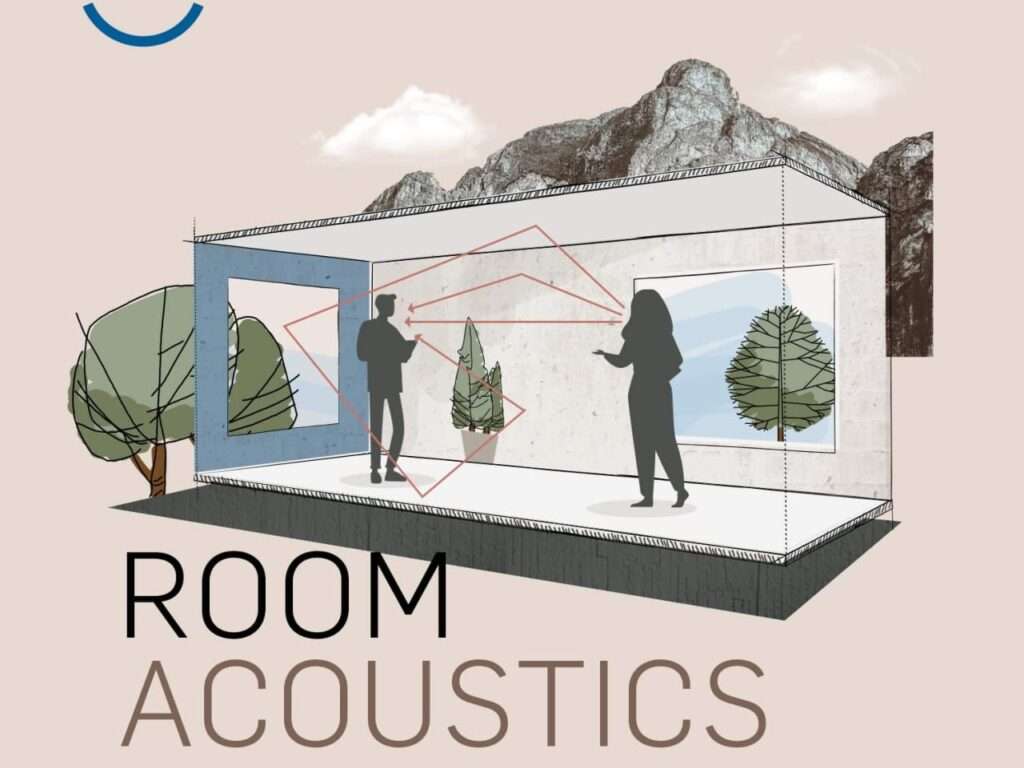When it comes to interior design, most people focus on the visual elements—color schemes, furniture, and lighting. However, an often-overlooked aspect of interior spaces is acoustics. The sound quality in a room can greatly impact its functionality, comfort, and overall ambiance. Whether it’s a home theater, office, restaurant, or bedroom, the acoustics of a space can enhance or detract from the experience. At Scale & Structure, we understand that great design isn’t just about what you see; it’s also about what you hear.
In this blog, we’ll explore why acoustics are so important in interior design and how to create spaces that are optimized for sound quality, making them more enjoyable, productive, and comfortable.

Why Acoustics Matter in Interior Design
Sound can have a powerful effect on how we experience a space. It affects our ability to focus, relax, and communicate. Poor acoustics can lead to distractions, discomfort, and even stress, while well-designed acoustics create a sense of harmony and improve overall quality of life.
Key Reasons Acoustics Matter:
- Comfort: The right acoustic design can make a space feel more comfortable by reducing noise disturbances and creating a pleasant auditory environment.
- Functionality: In spaces like offices or home theaters, the acoustics impact how well the space functions. Clear sound in a conference room or immersive audio in a media room can enhance the experience.
- Well-being: Studies have shown that good acoustics can have a positive effect on our mental health, reducing stress and improving overall well-being.
- Productivity: In workspaces or educational environments, controlling sound can improve focus, communication, and collaboration.
At Scale & Structure, we recognize that the right acoustics not only enhance the aesthetic appeal of a space but also play a crucial role in its functionality and user experience.
Types of Acoustics in Interior Design
Understanding the different types of acoustics is key to designing a space that’s optimized for sound. Here are the main types of acoustics that should be considered during the design process:
1. Reverberation
Reverberation refers to the persistence of sound in a room after the original sound source has stopped. It occurs when sound waves bounce off walls, ceilings, and floors, creating an echo-like effect. While a little reverberation can add warmth to a space, too much can make it difficult to hear and understand speech or music clearly.
How to Manage Reverberation:
- Use soft materials like rugs, curtains, and upholstered furniture to absorb sound.
- Install acoustic panels or foam tiles on walls or ceilings to reduce sound reflection.
- Consider using ceiling tiles designed to control reverberation in spaces like conference rooms or restaurants.
At Scale & Structure, we help you find the right balance to create a space with clear and comfortable sound without sacrificing the aesthetic.
2. Sound Isolation
Sound isolation is the process of preventing sound from entering or leaving a room. This is particularly important in spaces like bedrooms, home offices, or music studios where external noise can be a distraction. Good sound isolation ensures privacy, minimizes disturbances, and improves the overall acoustics within a room.
How to Improve Sound Isolation:
- Use thicker walls, double-glazed windows, and insulated doors to block external noise.
- Install acoustic seals around doors and windows to prevent sound leakage.
- Incorporate materials such as mass-loaded vinyl or soundproof drywall to improve sound isolation.
By incorporating these sound isolation techniques, Scale & Structure ensures your space is a peaceful sanctuary, free from external disturbances.
3. Sound Diffusion
Sound diffusion involves scattering sound waves evenly throughout a space, preventing sound from focusing in specific areas and causing harsh echoes. Diffusion helps create an even, balanced sound experience in a room, which is particularly important in spaces like concert halls, theaters, and recording studios.
How to Achieve Sound Diffusion:
- Use diffusive materials such as bookshelves, curtains, and textured walls that scatter sound waves.
- Incorporate asymmetrical design elements to avoid creating sound hotspots.
- Place decorative elements like sculptures or wall art strategically to diffuse sound.
At Scale & Structure, we take sound diffusion into account when designing spaces that need to offer an immersive, balanced sound experience.
4. Background Noise
In some spaces, like open-plan offices or restaurants, background noise can be a significant issue. High levels of background noise can interfere with communication, reduce concentration, and create an uncomfortable environment. Managing background noise is essential to creating a comfortable and productive space.
How to Control Background Noise:
- Use acoustic panels or baffles to absorb ambient noise in larger open spaces.
- Install soundproof flooring or carpets to reduce sound transmission between rooms.
- Use white noise machines or ambient sound systems to mask unwanted noise.
By incorporating these techniques, Scale & Structure helps create spaces where background noise is minimized, making them more conducive to focus, relaxation, and interaction.
Acoustic Design for Specific Spaces
Acoustic design needs can vary depending on the function of the space. Here’s a look at how to optimize acoustics for different types of rooms:
1. Home Theaters and Media Rooms
For a truly immersive viewing or listening experience, acoustics are essential in home theaters and media rooms. Clear dialogue, rich sound effects, and balanced music can elevate the experience. Properly positioned speakers, sound-absorbing materials, and soundproofing techniques are key to achieving the best audio quality.
At Scale & Structure, we specialize in designing home theaters where sound quality is optimized, making every movie or music experience extraordinary.
2. Offices and Workspaces
In work environments, acoustics can directly impact productivity and collaboration. Excessive noise can be distracting, while poor acoustics can make meetings or phone calls difficult. Acoustic panels, private meeting rooms, and noise-canceling solutions are important components of office design.
By integrating strategic acoustics, Scale & Structure helps create workspaces that foster focus, collaboration, and well-being.
3. Restaurants and Retail Spaces
The right acoustics are crucial in public spaces like restaurants and retail environments. Too much noise can make communication difficult, while poor acoustics can negatively affect the overall dining or shopping experience. A carefully crafted acoustic design can create an inviting atmosphere and enhance customer satisfaction.
Scale & Structure ensures that the acoustics in your restaurant or retail space are designed to improve comfort and create an enjoyable ambiance for both employees and customers.
4. Bedrooms and Quiet Spaces
In private spaces like bedrooms, minimizing external noise and ensuring a peaceful environment is essential for relaxation and rest. Soundproofing techniques, noise-reducing materials, and soft furnishings can help create a serene space that promotes better sleep and relaxation.
At Scale & Structure, we design bedrooms and private spaces with acoustics in mind, helping you create a tranquil retreat away from the outside world.



